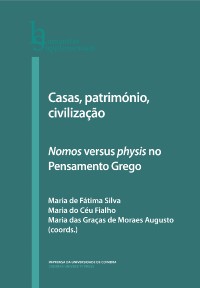Please use this identifier to cite or link to this item:
https://hdl.handle.net/10316.2/47654| Title: | O demiurgo da alma como um ζωγράφοs: estudo do excerto 38b-39c do Filebo | Other Titles: | The demiourgos of soul as a ζωγράφοs: study of Philebus 38b-39c | Authors: | Bondarczuk, Simone de Oliveira Gonçalves | Keywords: | Philebus;pathémata;the demiourgos in his soul;zográphos;grammatistés;Filebo;pathémata;o demiurgo na alma;zográphos;grammatistés | Issue Date: | 2019 | Publisher: | Imprensa da Universidade de Coimbra | Abstract: | The present article intends to interpret the excerpt 38c-39c of Plato’s
Philebus, which thematizes the construction of discourses (lógoi) and opinions (dóxai)
imprinted on the soul, being true or false. Socrates, in 39a, states that the dispositions
of the soul (pathémata) – presented as products resulting from the exercise of memory,
when it converges along with the aisthéseis (sensations) on the same objects – write
discourses in the soul, therefore being, the soul compared to a book. In this sense, a very
complex image of a demiurge internal to the soul is created, identified to a painter (zográphos),
and at the same time associated to a scribe (grammatistés) as well. Departing
from these questions, we will attempt to answer the philosophical implications of Plato’s
image-synthesis. O presente artigo se propõe a fazer uma interpretação do excerto 38c-39c do Filebo, cuja temática diz respeito ao primeiro processo de formação de opiniões (dóxai) e discurso (lógoi) na alma, sejam estes verdadeiros ou falsos. Sócrates, em Filebo 39a, estabelece que as disposições da alma (pathémata) – apresentadas como produtos resultantes do exercício da memória, quando esta converge, junto com as sensações (aisthéseis), sobre os mesmos objetos – escrevem na alma discursos, sendo por isso a alma comparada a um livro. Nesse passo, estabelece-se uma imagem bastante complexa de um demiurgo interno à alma, identificando-o a um pintor (zográphos), associado a um escrevente (grammatistés). A partir destas indagações, serão consideradas as implicações filosóficas decorrentes dessa imagem-síntese criada pelo filósofo. |
URI: | https://hdl.handle.net/10316.2/47654 | ISBN: | 978‑989‑26‑1839‑5 (PDF) 978‑989‑26‑1838‑8 |
DOI: | 10.14195/978‑989‑26‑1839‑5_11 | Rights: | open access |
| Appears in Collections: | Casas, património, civilização: nomos versus physis no pensamento grego |
Files in This Item:
| File | Description | Size | Format | |
|---|---|---|---|---|
| o_demiurgo_da_alma_como_um_zogr_fos.pdf | 373.2 kB | Adobe PDF |  |
Items in DSpace are protected by copyright, with all rights reserved, unless otherwise indicated.
